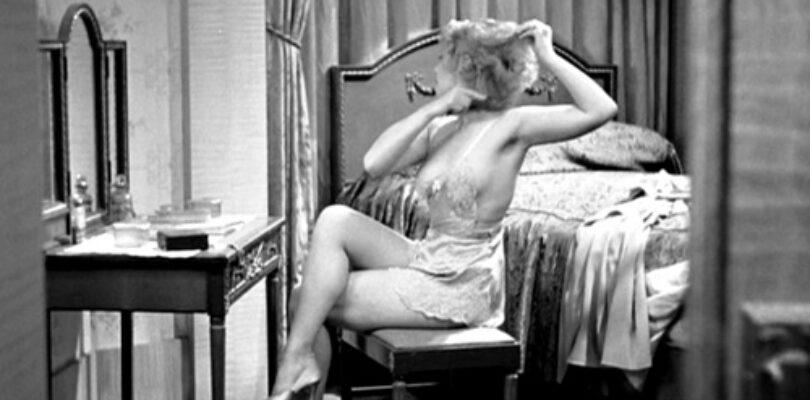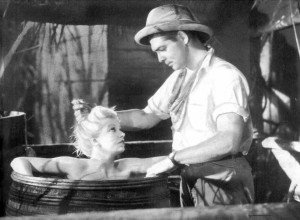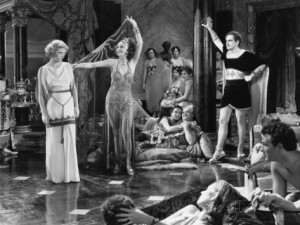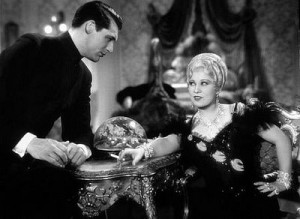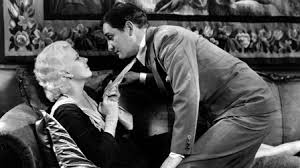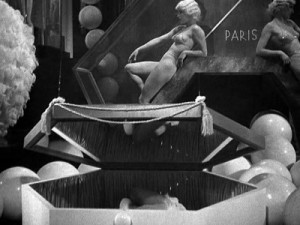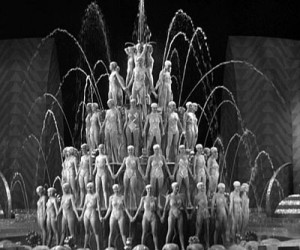Pre-Code Hollywood studios spent millions transitioning their medium to sound and other new technologies that brought about major advances in photography, lighting, and set design. But there were still five million unemployed people in the United States and many more just getting by. The studios were losing money, many of them going bankrupt.
By 1930 the breadlines were longer than the ticket lines and people were slow to give up their hard earned money. They wanted to be entertained, they wanted to laugh and forget their troubles for just a while. Comedies, adventure, and musicals quickly became the most popular film genres of the time.
I. Pre-Code Action, Adventure, and Drama
Hollywood took their stories to the far corners of the earth as places like Africa, the South Pacific, and the Far East became exotic settings for movies. An island kingdom somewhere in the Pacific with strange creatures, even stranger natives, a damsel in distress and a hero in love made King Kong one of the greatest movies of all time. It’s more love story than monster movie as Kong falls for Fay Wray. And who can blame him? But Wray’s heart belongs to another and in the end Kong becomes the most sympathetic character in the story.
Clark Gable is a hard drinking plantation owner in Indochina who has blonde hooker Jean Harlow land on his shores in Red Dust. He enjoys her company until classy brunette Mary Astor shows up with her malaria ridden husband. He moves on to what appears to be the better thing, juggling the two until Astor has finally had enough. She shoots, but doesn’t kill Gable who decides that maybe he’d be happier with the trashy blonde after all
Movies about classic antiquity gave filmmakers an opportunity for exotic locations, elaborate sets, and scantily clad women. Cecil B. DeMille was the most famous director in the world and he was always up against censors for violent and disturbing scenes as well as for the revealing wardrobes. In Sign of the Cross, the games at the Coliseum are brutally depicted: Christians vs. lions, alligators, bears, apes, elephants, and mechanical devices. Claudette Colbert’s milk bath almost covers her breasts and Rome’s most promiscuous femme tries to tempt the chaste Christian girl with a lesbian seduction dance.
DeMille’s Cleopatra, was another orgy of paganism filled with erotic dance scenes and barely dressed women. The director uses art deco architecture to give the first Cleopatra talkie a more modern look and casts Colbert as the Queen of Egypt. She seduces Mark Anthony on the royal barge floating down the Nile and commits suicide by snake – two of Demille’s greatest scenes. This is one of the last films made before the Code was enforced in 1934.
Hell’s Angels was Hollywood’s first blockbuster costing an unheard of $3 million. The movie was started in 1927 and filmed over three years going from silent to sound. Several pilots died filming the dogfight sequences and a seventy-foot-long scale model of a German zeppelin was built and destroyed in the fiery crash scene. Jean Harlow was 18 years old when she joined the production in 1929 and producer/director Howard Hughes crashed while flying a plane in a scene that his stunt coordinator refused to allow his pilots to do. If the film itself isn’t great, it’s at least a great moment in Hollywood history.
Other films worth watching: Kongo, Morocco, Mata Hari, The Most Dangerous Game.
II. Pre-Code Comedy
Finally free from the limitations of physical comedy, the genre took off quickly in the Depression years and was the favorite of moviegoers. The first comedies of the talkie era featured vaudeville type humor, but this was quickly replaced by what became the standard bearer of humor – the screwball comedy. Still popular today, these films are some of the greatest comedies in Hollywood history.
In Trouble in Paradise, two jewel thieves, played by Herbert Marshall and Miriam Hopkins, meet in Venice, fall in love, and move to target-rich Paris. There they plan to run a con on the young, rich and widowed owner of a perfume manufacturing company. When the thief falls for the mark, things get interesting. The smooth delivery of the clever dialogue would set the tone for many future comedies.
Class differences in Depression-era America is at the heart of It Happened One Night. Spoiled rich heiress Ellie (Claudette Colbert) marries a playboy aviator only to have her father whisk her away and announce that the marriage would be annulled. Ellie runs away from home and sets out to find her husband. Alone with no money, she learns what it’s really like in the real world and falls for a guy way beneath her station – newspaper man Clark Gable. Gable is angling for the story of the runaway heiress and travels with her on her quest. Of course, they fall in love and she leaves her wealthy groom for the broke working man.
Platinum Blonde reaffirms class distinctions as newspaper man Smith marries rich society girl Ann, played by Jean Harlow. Both Ann’s blue blood family and Smith’s working class colleagues think the marriage a mistake and the newlyweds are soon at odds.
He can’t stand her crowd, she can’t stand his and after he brings his rowdy, drunk friends home to party she kicks him out. Waiting in the wings is the girl he really loves: newspaper reporter Gallagher (played by 18-year-old Loretta Young). For a comedy, it does have a surprisingly serious side with its cynical view of the rich.
Other films worth watching: She Done Him Wrong, The Front Page, Night After Night, Twentieth Century
III. Pre-Code Musicals
Broadway style productions came to the movies with musicals that combined comedy, drama, and romance set around a nightclub or Broadway show. They are more adult oriented than the musicals of later years and have elaborate sets, women in various states of undress, and risqué dialogue with sexual references that flew right over the censor’s heads. As did the extravagant and wildly costumed dance numbers.
Murder at the Vanities may be the only murder mystery/musical ever made. The star of the show is targeted in a series of attempts that point to someone in the cast. The police allow the show to go on that night while they investigate. Two murders mixed with comic relief follow, but the real attraction are the female members of the troupe who wear see through outfits and need pasties, or their own hands, to cover themselves. And, amazingly, a musical number called “Sweet Marijuana” sings the praises of cannabis.
Busby Berkeley worked on over a dozen Pre-Code musicals. His elaborately choreographed dance numbers, with the overhead camera kaleidoscope of girls effect as well as the camera moving through the spread eagled legs of the chorines, were essentially soft core porn in that everything pointed to and accentuated the female anatomy. Gold Diggers of 1933, which is based on the long running play, is a romantic comedy starring the cast of a Broadway production. Dick Powell and Ruby Keeler sing “Pettin’ In The Park” – which somehow the censors didn’t get – and Ginger Rogers sings “We’re in the Money” dressed in a coin outfit. The films’ ending is one of the most remarkable in Hollywood history: a musical number, “The Forgotten Man,” a somber hymn for the veterans of WWI and an elegy for Depression-era America.
Berkeley goes well over the top in Footlight Parade. James Cagney plays a Broadway musical director and Joan Blondell his secretary who has fallen in love with him. The musical number “By A Waterfall” has incredible overhead shots of the girls doing a ballet in a large pool of water and features Berkeley’s famous “Human Waterfall.” The final number, “Shanghai Lil,” ventures into an opium den populated by prostitutes that work the waterfront.
DeMille couldn’t resist the opportunity that musicals presented and produced an art deco version, Madam Satan. To win back her philandering husband, a woman adopts the persona of the sexy “Madam Satan” who makes her appearance at a bizarre masquerade ball aboard a zeppelin floating above Manhattan. She mesmerizes every man at the ball, including her husband, until the dirigible collapses and the party goers parachute into the Central Park reservoir.
Other films worth watching: 42nd Street, Dames, Wonder Bar, Flying Down to Rio
[box_light]
Read the first part of this article:
“Pre-Code Hollywood: Gangsters, Monsters, and Dames”
[/box_light]

